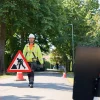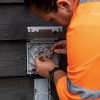BT and EE Extend Gov’s 4G Emergency Services Network for 7 Years

The UK Government has signed a new £1.29bn deal with BT (EE) to extend their operation of the 4G based Emergency Services Network (ESN) for another 7-years. But after years of delays and disputes, only some of which is related to EE’s side of things, the Home Office still doesn’t expect the ESN to be fully operational until 2029.
Just to recap. The emergency services (police, fire, ambulances etc.) were originally due to have moved away from the old Motorola-owned Airwave network several years ago, which harnessed TETRA (Terrestrial Trunked Radio) technology. This is because TETRA was regarded as slow (dialup / ISDN like data speeds) and expensive, although it does deliver strong voice coverage (c.97% geographic reach) and has been reasonably dependable.
The limitations of Airwave’s network were often highlighted as the primary reason for why the UK government, in 2015, decided to replace it with a 4G mobile alternative (ESN) – the first country to do so. The Home Office originally expected that emergency services could start using the ESN in September 2017, allowing Airwave to be replaced by December 2019, but the contract ended up being billions of pounds over budget and years behind schedule.
Advertisement
According to last year’s report from the National Audit Office (here), the Home Office is expected to have spent just under £2bn on the ESN by March 2023, and a further £2.9bn to maintain Airwave because of all the delays. A variety of problems have beset the project, from delays with developing the new end-user kit (handsets etc.), to delays with the network build and competition disputes related to Motorola’s conflicting roles in the project etc. The project has since been effectively reset.
On the BT side of things, EE has already built a new dedicated core network for the ESN, ensuring priority EE connectivity to Emergency Services users at all times. The original contract also included upgrading more than 19,500 of EE’s existing 4G sites ready for ESN and expanding coverage in rural and critical operational areas etc.
The New Contract Extension
The Home Office has previously indicated that it intended to award EE a new contract, “without competition“, for the network rollout side to avoid delaying the programme further, which it planned to complete when the current contract ends (31st December 2024). Suffice to say that the BT Group finally confirmed they’d signed this 7-year extension contract, worth £1.29bn, on Sunday.
Under the new contract, BT Group will continue to build, maintain and develop critical mobile coverage and capabilities for ESN as it rolls out to support more than 300,000 users. The new contract also sees BT take management responsibility and provide coverage services for the Home Office’s Air-to-Ground (A2G) network, their Extended Area Services (EAS) sites, London Underground and specific road and rail tunnels.
Advertisement
It is expected that the ESN programme will see BT Group carry out the country’s largest ever single roll-out of coverage solutions into indoor locations – to meet the operational standards for Public Safety Communications Services (PSCS) users. The new contract spans 7.25 years, with the option for a one-year extension.
Bas Burger, CEO of Business at BT, said:
“BT Group has been a committed longstanding partner for Britain’s Emergency Services Network (ESN). We’re proud to double down on this commitment today by broadening the scope of our agreement with the Home Office until 2032 and beyond – as the Government takes ESN from build through to delivery and operation of this critical network.
Essential public services like these depend on a rock-solid digital foundation. Through our award-winning EE mobile network, we’ll continue to play a central part in delivering mission- critical, trusted communications for the Emergency Services on the ground, in the air, and wherever they need to operate – helping them connect for good and protect the communities they serve nationwide.”
According to the Home Office, the timetable for completion of the ESN (this covers everything, not only the network side) has been pushed back to 2026 “at the earliest”, with the later date of around 2029 often being touted as a more realistic expectation. Meanwhile, maintaining Airwave into the 2030s is predicted to cost at least £250 million a year.
Mark is a professional technology writer, IT consultant and computer engineer from Dorset (England), he also founded ISPreview in 1999 and enjoys analysing the latest telecoms and broadband developments. Find me on X (Twitter), Mastodon, Facebook, BlueSky, Threads.net and Linkedin.






















































Just checked my LinkedIn as I couldn’t remember – 9 years ago next month I started on this project in a contract role related to the security of apps that would be on the platform. There was millions spent in that one location. Things like servers, RF-free chambers to test handsets, etc.
I am frankly amazed that the stuff I worked on would be well past its warranty periods whilst never being used.
How long are they taking to replace Airwave ESN will be obsolete before it is fully implemented
The gov just needs to get a grip on tech. All tech projects seem to go vastly over budget and take twice as long.
Not sure if the blockage is ever changing requirements, bargin basment prices bringing in monkeys, or the gov themselves but the adults with technical compitancy need to be allowed the floor and the driving seat.
I suspect the problem is that government contracts go to the vendor who quotes the lowest cost initially, as opposed to the vendor who will deliver the lowest cost overall or the vendor who can successfully implement the project.
I doubt the suppliers are at fault, or if they are it’s more the responsibility of the government that keeps fiddling with contracts. BT is a serious company that has experience in the public sector so hopefully this works out
‘Just’
If the ESN and EE are a seperate core network, does this mean that EE ESN masts does not always have EE core network setup on them?
If the answer to that question is yes, are EE’s masts only on ESN core network are “Emergency calls only” capable?
EAS sites were Home-Office funded and didn’t always have commercial service (as I understand), these only broadcast 234-20 which is the ESN-core-code. I may have read somewhere else recently that these are now being opened up to commercial service, carrying 234-30.
Sites built under normal commercial rules by EE, carry 2 network codes – 234-20 for ESN users, 234-30 for commercial users. Both network codes can make & receive calls to or from any number, but in the event of congestion or whatever, 234-20 users get priority.